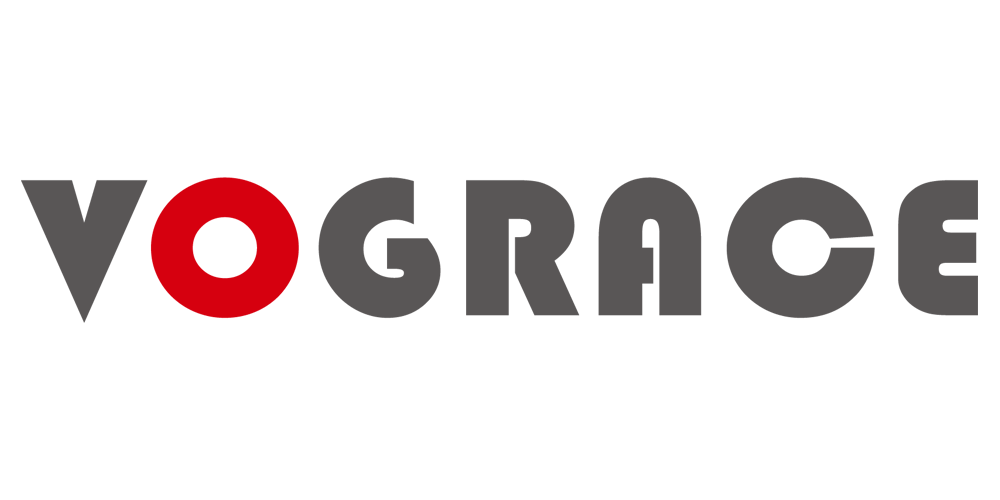How to learn design for beginners without any art foundation and experiences?
This article will explain from different angles about issues that need to be considered about how to learn design for beginners without any art foundation and experiences.
Contents:
1. Determine whether you are suitable for the design industry
2. Make sure you are suitable for this design direction
3. How to choose your suitable design industry?
4. Determine if you have the time and energy to learn design
5. Determine whether to self-study at home or go to a design class?
6. How much budget do you need to prepare for paid learning design?
7. Introductions to some commonly used design softwares
8. How to balance study, work and rest time?
9. How to monetize so as to make yourself more motivated to learn design?
10. What should you do if you want to give up after learning design?
11. Excellent design books recommended for beginners
12. Excellent art museums and gallaries recommended for beginners
13. Excellent design websites to refer to for beginners?
14. Conclusion

Before you decide to learn design, you need to ask yourself why? Only after you understand your motives, will you stick to it when you encounter various setbacks in the follow-up learning process. Because I have seen many people start to study design at home or buy courses based on temporary interest and impulse, and they are all gone in the end. Therefore, do not start to learn design blindly with the naive idea of changing careers with zero basis. Everyone has limited time and energy, and you should do the right thing at the right time. Many people like basketball and football. There are many fans who are crazy about it. Do they all want to switch to sports? Not really. Below we will talk in detail about the various issues that need to be considered about how to learn design.
1. Determine whether you are suitable for the design industry
If a design master as the standard, most people are not suitable for design; if design as a career to support yourself as the standard, then just the opposite, most people are suitable for design. The designer is neither "highly compelling" nor so unbearable. It is just an ordinary career. The people who are fed by it are of all kinds. Some people’s specialty is creativity and spirituality in design; some people are proficient in various cutting-edge design software and can quickly make cool renderings and analysis diagrams; some people are good at communication and can quickly get trust and resources to stand firm. So what you need to consider is not whether it is appropriate or not, but whether you can accept it. Can you get a high salary in the future? Can you accept repeated revisions? Can you withstand the pressure brought by customers or your boss? Can you find fun in the boring work content? Can you keep the habit of continuous learning? If the answer is yes, you should stick to it.
If you have these abilities, congratulations, you are very suitable for designing:
Love is the driving force for your self-driven design!
Time is the possibility that you are better than others!
Habit is the soft power that makes you outstanding!
Ideas are the key to reducing the cost of trial and error!
The method is that you are on the way to achieve your goals!
Skills make sure that you produce efficiently!
Persistence is the possibility for you to reach the end!
Attitude is the key to resist pressure!
Emotional intelligence is your magic weapon to deal with the workplace!
Sharing brings the blessing of your lucky god!
2. Make sure you are suitable for this design direction
For those who are new to design, should a certain style of design direction be more suitable for them? You may be interested in grahic design or filming or post-production. Have you thought about the specific design direction? Because time and strength are limited, we need to choose the right direction in order to achieve what we want.
First of all, we must understand the direction of this industry, for example, we can subdivide into:
- Graphic design (advertising direction)
- Graphic design (brand direction)
- Graphic design (e-commerce art direction)
- UI design (design category)
- UI design (interactive user experience direction)
- Film and television post-production
- Game 3D modeling
- Game original painting
- Illustrator
- Industrial product design
- Interior design
If you don't understand these subdivision, please refer to Wikipedia. Wikipedia is really helpful for all of us to quickly understand some things we don’t know. Not only can you overview the meaning of the vocabulary, you can also view various branches. If you want to learn about a subject like Design, you can follow along and check some authoritative websites, celebrities, institutions, schools, reference books, etc. related to the subject.
Here is the recommended link pages about design:
https://en.wikipedia.org/wiki/Design
https://en.wikipedia.org/wiki/Graphic_design
https://en.wikipedia.org/wiki/List_of_graphic_designers
https://en.wikipedia.org/wiki/User_interface_design
https://en.wikipedia.org/wiki/Post-production
https://en.wikipedia.org/wiki/3D_computer_graphics
https://en.wikipedia.org/wiki/3D_modeling
https://en.wikipedia.org/wiki/Painting
https://en.wikipedia.org/wiki/Illustrator
https://en.wikipedia.org/wiki/Illustration
https://en.wikipedia.org/wiki/Industrial_design
https://en.wikipedia.org/wiki/Product_design
https://en.wikipedia.org/wiki/Computer-aided_industrial_design
https://en.wikipedia.org/wiki/Interior_design
https://en.wikipedia.org/wiki/Interior_Design_Masters
3. How to choose your suitable design industry?
- According to your own interests and development, as the saying goes, interest is the best teacher and the biggest motivation for you to persevere. Any industry needs perseverance to see the future and development.
- According to the major you are studying, if you have a wide range of interests, make reasonable arrangements based on your knowledge of professional skills.
- Look at your own employment city and the city you want to develop. All walks of life have their own suitable cities and development, which is determined according to development.
- Look at the future development and trend of the industry, whether it will be eliminated in the future. If the prospects for real play are not particularly good, there is no need to engage in it.
4. Determine if you have the time and energy to learn design
If you just want to master the use of PS, AI, AE and other design software to create simple works, then you can learn to use a design software in a week. Or become an expert, then the time you need to spend will need to be calculated in years. Many people who have studied design for 3 years in college will have ordinary works after graduation, and can only be regarded as qualified tool people, not designers. In addition to normal course study, you also need to keep accumulating design materials and inspiration. Constantly advancing with the times and constantly bringing new works, these are the talents that designers need most.
5. Determine whether to self-study at home or go to a design class?
It depends on your budget and self-discipline habits. The cost of enrolling in a study class is much higher than self-study. But the efficiency of the study class will be higher. Self-study requires you to have good self-discipline habits and understanding.
If you are more self-disciplined, it is suitable to take the path of preliminary basic self-study + project actual experience accumulation.
If you feel you can’t stick to it, enroll in a class. It's best to find someone around you to recommend, the experience of those who come here won't cheat you.
Warm Tips:
Try to choose an offline training class close to home.
Consult with friends you know well.
Search for local business: Check how the evaluation of the training class is. If the evaluation is not good, please choose carefully.
Visit Youtube, you will find many free video tutorials.
6. How much budget do you need to prepare for paid learning design?
The cost of design softwares:
Adobe Photoshop: $9.99/month
Adobe Premiere Pro: US $ 20.99/month
Adobe Illustrator (Ai): $20.99/month
InDesign: $20.99/month
After Effect: $20.99/month
You can visit https://www.adobe.com/ to buy their entire collection of design softwares. The Annual plan, paid monthly—US$52.99/mo; Annual plan, prepaid US$599.88/yr; Monthly plan—US$79.49/ mo.
If you choose college design courses, please visit the college official website to consult the tuition fee.
7. Introductions to some commonly used design softwares
Photoshop
Main functions: Image processing, banner, software interface design
UI design software that is used 80% of the time. Mainly to do interface, banner, Appicon, cutting pictures and other tasks with static vision as the core. Basically use the vector tools inside to draw. UI designers must be very proficient in this software.
Illustrator
Main functions: Illustration, icon, LOGO, font design
Because of its pure vector characteristics and the convenience of line-to-surface conversion, it is mainly used as a functional icon in Internet products.
Sketch+Principle
These two can be regarded as software specially designed and developed for UI, but only the Mac version is available. Windows computers cannot use, which leads to problems in the versatility of this software in the industry.
The functions of Sketch basically serve UI design. It is a vector software, so the efficiency of UI design is very high.
Principle is a motion design software that can seamlessly dock with Sketch. Cooperating with Sketch, it can make a lot of UI static + dynamic effect designs that can be operated.
This is not a design software, but a code editor. It is very convenient to write front-end code. Front-end knowledge is also very important for UI designers as to understand the possibility of implementing your own design in terms of programs and establish smooth communication with programmers.
After Effect
Main function: Motion design
It is not limited to interface dynamics, and the performance of dynamic effects can basically be achieved. But there is also a flaw, that is, no matter what you make, you can only output it in image format.
Other:
Figma: online collaborative design
XMind: product framework design
Axure: product prototyping tool
Sketch: mobile UI design, annotation and cutting
Note that for different job requirements, you may also need to master some targeted knowledge:
For example, UI designers need to have graphics drawing capabilities, mobile UI design capabilities, PC UI design capabilities, software planning and interaction design capabilities, and aesthetic capabilities. The interface of UI designers still has to serve product design, so the design of the interface should not only stop at aesthetic thinking. The designer should also think about the logic of the interface and the placement of interface elements. After in-depth understanding of the behavioral purpose of the product, the design is reasonable. This requires the designer’s logical thinking ability and the comprehensive ability of interface interaction design.
8. How to balance study, work and rest time?
I recommend you to make a plan or list. Arrange your daily or weekly to-do things. Some suggestions for you:
- Keep at least 40% of the blank time in the daily schedule.
- Plan time management on a weekly basis instead of days.
- Control the interference time of others.
- Fragmented time doing chores.
- Make good use of your own biological clock: Do more difficult things when you have the best energy.
- Pay attention to maintaining good health.
9. How to monetize so as to make yourself more motivated to learn design?
- Organize your learning experience into a tutorial to share with others, and receive a welcomed amount of reward.
- Sell your design works to people in need.
- Make your design into a real object and sell it to others. I have learned that some people who like drawing and design, find some cheap manufacturers on the Internet to customize some gadgets, and then sell the finished products to those who need them. You can call it small business. Such as some designers make artworks and order custom keychains, stickers, throw pillows, cards etc from Vograce.
In short, no matter what monetization method is, you need to spend time and energy.
10. What should you do if you want to give up after learning design?
In psychology, there is a psychological effect called "self-fulfilling prophecy": when we do something, we will unconsciously shape our thoughts and behaviors to conform to expectations, and finally lead to the realization of the prophecy. For example, when you are doing something and you have no confidence or don’t see any result, you will be shaken and think that you can't do it. Even if others are confident in you, you still don't believe in yourself. If you really fail in the end, it proves the same as you thought at the beginning, then you say “I know I can’t do it myself”. This is called "self-fulfilling prophecy".
Self-predictions almost made me change my career and give up designing. Self-fulfilling prophecies can really ruin a person if used improperly. When you have a clear goal and motivation, use the "self-fulfilling prophecy" to tell yourself that “I can/ I can do it but it has not yet reached the level of qualitative change caused by quantitative change.”
Tell yourself every day, "As long as you stick to it, it must be possible. Take your time." After positive hints, your behavior, thoughts, and mood will change. Use time and action to prove that your "positive prophecy" is true.
11. Excellent design books recommended for beginners
It is recommended to visit some educational websites to see the recommended bibliographies of design subjects. You can also query directly on Google, such as design books recommended by Cambridge University. Here I recommend these design books:
The Essential Principles of Graphic Design (Debbie millman)
The Non-Designer’s Design Book (Robin Williams)
Don’t Make Me Think - A Common Sense Approach to Web Usability (Steve Krug)
Communications Today (Ryan.W.,Conover.Th)
The Story of Art (Sir E.H.Gombrich)
History of Modern Design
The Visual Dictionary of Graphic Design
Process - 50 Product Designs From Concept to Manufacture
The Fundamentals of Typography
If you don't know where to buy these books, visit Amazon where books are on sale.
12. Excellent art museums and gallaries recommended for beginners
Where can you find the essence of art? Museums and gallaries. These institutions collect the most precious master pieces in our human history. If you want to learn art, get close contact to art masters, don't miss museums and gallaries. Pay attention to the dynamics of some great artists and designers, visit their exhibitions, interview videos, art works etc.
List of highly recommended excellent art museums and gallaries in the world:
Vangogh Museum
Museum of Modern Art
The British Museum
The Vatican Museum
Musée du Louvre
Musée d'Orsay
Hagia Sophia
Rijksmuseum
Egyptian Museum
Soumaya museum
National Museum of China
Hermitage Museum
Tate Modern
Museo Nacional del Prado
Museo Nacional Centro de Arte Reina Sofía
The Uffizi Galleries
National Gallery of Art
The National Gallery, London
The Art Institute of Chicago
Mauritshuis
Becoming a designer does not necessarily require particularly excellent drawing skills, but an artistic aesthetic is necessary. So watching the works of celebrities, visiting museums, galleries, etc. can cultivate a good aesthetic and inspire our creative inspiration.
13. Excellent design websites to refer to for beginners
- Excellent educational websites
- Excellent real product websites
- Top design websites
For example:
https://www.behance.net - Adobe designer communication platform
https://dribbble.com - Work display and communication platform for various creative creators
https://abduzeedo.com/ - Daily sharing of high-quality design creative inspiration
https://www.artstation.com - Game movie CG special effecs works show
https://beta.thedieline.com - global packaging design blog
https://www.designspiration.net - discover and share the world greatest design resources
https://ello.co - A global community for creative work publishing
https://thefwa.com - Show the most cutting-edge website design and trends
https://www.pinterest.com - Global creative ideas sharing website
https://bestwebsite.gallery - A collection of awesome web pages
http://www.logobook.com - logo design reference
14. Conclusion
Once you have made up your mind to learn design, please don't give up. If you pay, you may not gain much. But if you don't pay, there will be no gain. We may not have the artistic talents of Van Gogh and Leonardo Da Vinci, but practice makes perfect. The more works you create, the higher the probability of successful works. With scientific learning methods + correct thinking for guidance + repeated trial and error, there will be high returns in the end. In addition, know how to imitate, learn to learn from, watch more excellent design works, and strive to create something of your own.












